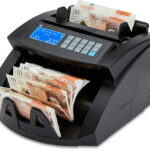The degree symbol, denoted by the symbol °, is a small but powerful character that finds its way into various aspects of our lives, from academics and science to everyday communication and technology. It is a simple yet essential element that represents a unit of measurement for angles, temperature, and even geographic coordinates. In this exploration of the degree symbol, we will delve into its origins, its diverse uses, and its importance in our modern world.
The origins of the degree symbol can be traced back to ancient Greece, where it was used by astronomers and mathematicians to measure angles in circles. The Greek word “grados” meant “a step,” and this concept of dividing a circle into 360 equal steps or degrees laid the foundation for the degree symbol as we know it today. Over time, this symbol evolved and found its way into various mathematical and scientific disciplines. Click here for more degree symbol word
In mathematics and geometry, the degree symbol is used to denote angles, with a full circle measuring 360 degrees. This system of angular measurement is fundamental in fields like trigonometry, calculus, and geometry, where understanding angles is crucial for solving complex problems and making precise calculations. The degree symbol serves as a concise and universally recognized shorthand for representing angles, making it an indispensable tool for mathematicians and scientists.
Beyond mathematics, the degree symbol has a significant presence in the realm of meteorology. It is commonly used to indicate temperature in both the Celsius and Fahrenheit scales. For example, 25°C signifies a comfortable room temperature, while 100°F indicates a scorching hot day. In weather forecasts and discussions, the degree symbol is a familiar sight, helping people make sense of temperature fluctuations and plan their activities accordingly.
The degree symbol also plays a vital role in navigation and cartography. Geographic coordinates, such as latitude and longitude, use degrees to pinpoint locations on the Earth’s surface. This system is integral to global positioning systems (GPS) and mapping services, enabling us to navigate our way around the world with precision. Whether you’re using a GPS device for driving directions or exploring maps online, the degree symbol is a constant companion, guiding you to your destination.
In everyday communication, the degree symbol is commonly employed to express various concepts. In cooking, it represents the temperature at which an oven should be set, ensuring that your recipes turn out just right. In the world of photography, it signifies the angle of rotation applied to an image, allowing for precise adjustments. Even in informal conversations, the degree symbol can convey emotions or intensity, as seen in expressions like “I’m freezing to death!” or “I love ice cream at any temperature.”
Furthermore, the degree symbol has found its way into the digital age, where it is easily accessible on keyboards and in word processing software. It can be inserted into documents and emails with a simple keystroke or by using character insert tools. This accessibility ensures that the degree symbol remains a part of our everyday written communication, allowing us to convey information accurately and effectively.
In conclusion, the degree symbol may seem like a small, unassuming character, but its significance in our lives cannot be overstated. From its ancient Greek origins in the measurement of angles to its widespread use in mathematics, science, meteorology, navigation, and everyday communication, the degree symbol is a versatile and essential tool. It simplifies complex concepts, guides us in our daily activities, and ensures that we can convey information accurately in a wide range of fields. So, the next time you encounter the degree symbol, remember the rich history and practicality it brings to our world.

 Unveiling the Artistry of Riddim DJs: Architects of Sonic Innovation
Unveiling the Artistry of Riddim DJs: Architects of Sonic Innovation  ماكينات عد الفلوس: تحسين فعالية إدارة الأموال
ماكينات عد الفلوس: تحسين فعالية إدارة الأموال  A Deep Dive into Google Flights
A Deep Dive into Google Flights  Navigating the World of Making Money Online: Insights from the Make Money Online Reddit Community
Navigating the World of Making Money Online: Insights from the Make Money Online Reddit Community 


